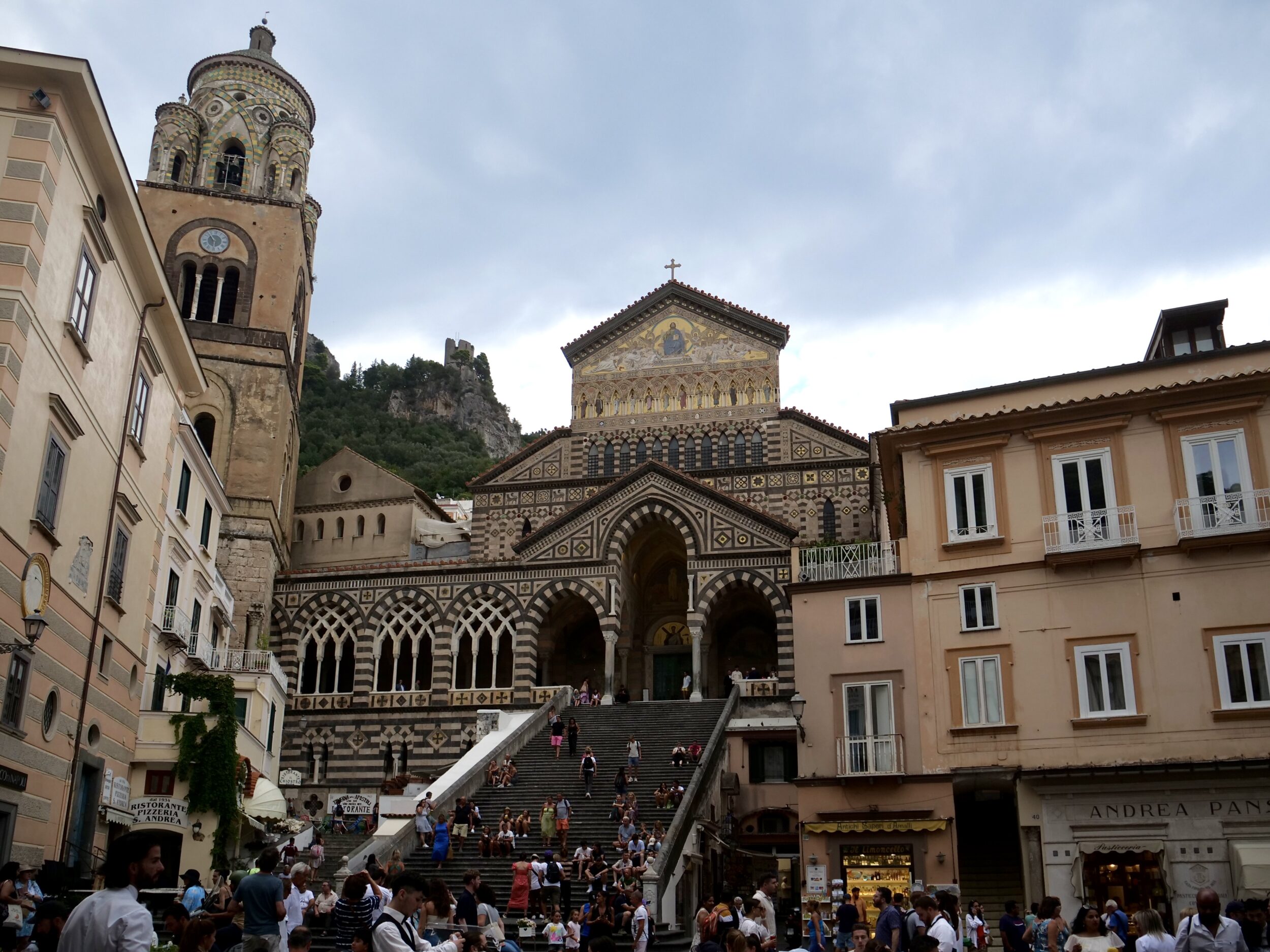Construction began around twelve centuries ago, but most of what a 21st century visitor sees when looking at Amalfi Cathedral (aka “Duomo di Amalfi” and “Duomo di Sant’Andrea”) is of much more recent vintage.
Allegedly, it has housed the “relics” of St Andrew (Sant’Andrea) since not long after “Crusaders” delivered them from Constantinople to Amalfi in 1206 CE.
Many a “landmark” Italian church has a “medieval” exterior, now ill-matched with a lavishly reworked, much more ornate, “Baroque” interior.
Over the centuries, Amalfi’s cathedral has become a riotously eclectic hybrid of very different styles. (and of different buildings, joined together, repaired, and re-imagined)
Begun in the 9th and 10th centuries, it has been added to and redecorated several times, overlaying Arab-Norman, Gothic, Renaissance, Baroque elements, and finally a new 19th century Norman-Arab-Byzantine facade. The cathedral includes the adjoining 9th-century Basilica of the Crucifix. Leading from the basilica are steps into the Crypt of St. Andrew, where his relics can be found.
The above description is from Amalfi Cathedral’s Wikipedia entry.
My photo was taken at 6.01 pm on 07 September 2023, from Amalfi’s main square, which the Cathedral overlooks.
As we were about to discover, more than a few people were then inside the Cathedral, most of them as participants in a “sacred” rite.
That “flock”, however, was handsomely outnumbered by the “horde” in the square, below – tourists, engaged in secular pursuits.
The cathedral’s tallest structure is its Arab/Norman bell tower, built in the 12th and 13th centuries.
It is clearly visible from any nearby boat…as you can see in the immediately-preceding post’s featured image.
The bell tower is still Amalfi’s most impressive structure; it is the most elaborate example of its type – a type specific to southern Italy..
It does not in fact out-lean Pisa’s famous tower – my photo’s “distortorama” is the inevitable consequence of “take one wide building, with its tallest element on one end, place said building atop a steep set of stairs, leading up from a compact public square…then invite visitors in said square to attempt to “capture” Amalfi Cathedral’s frontage in a single photo”.
